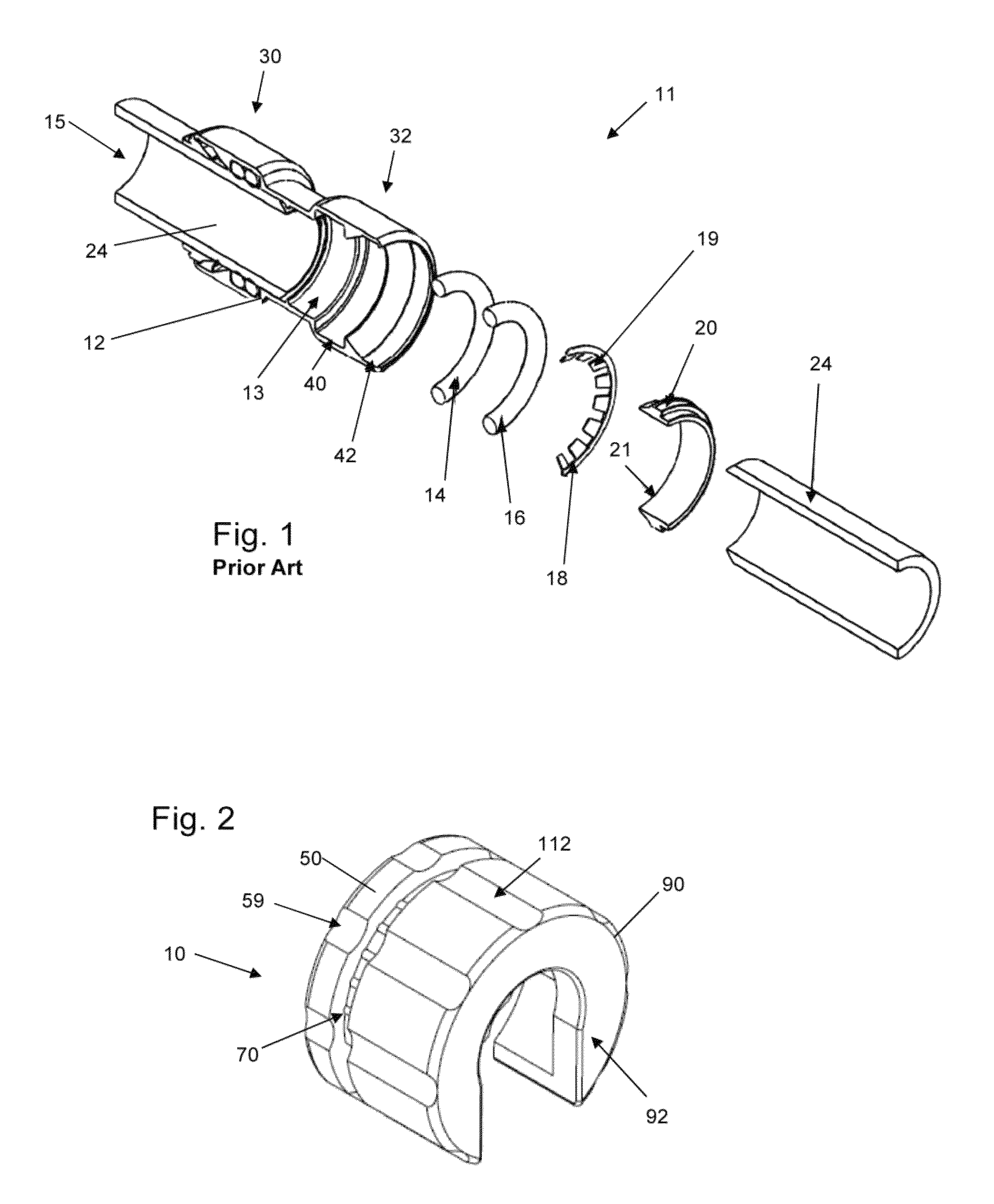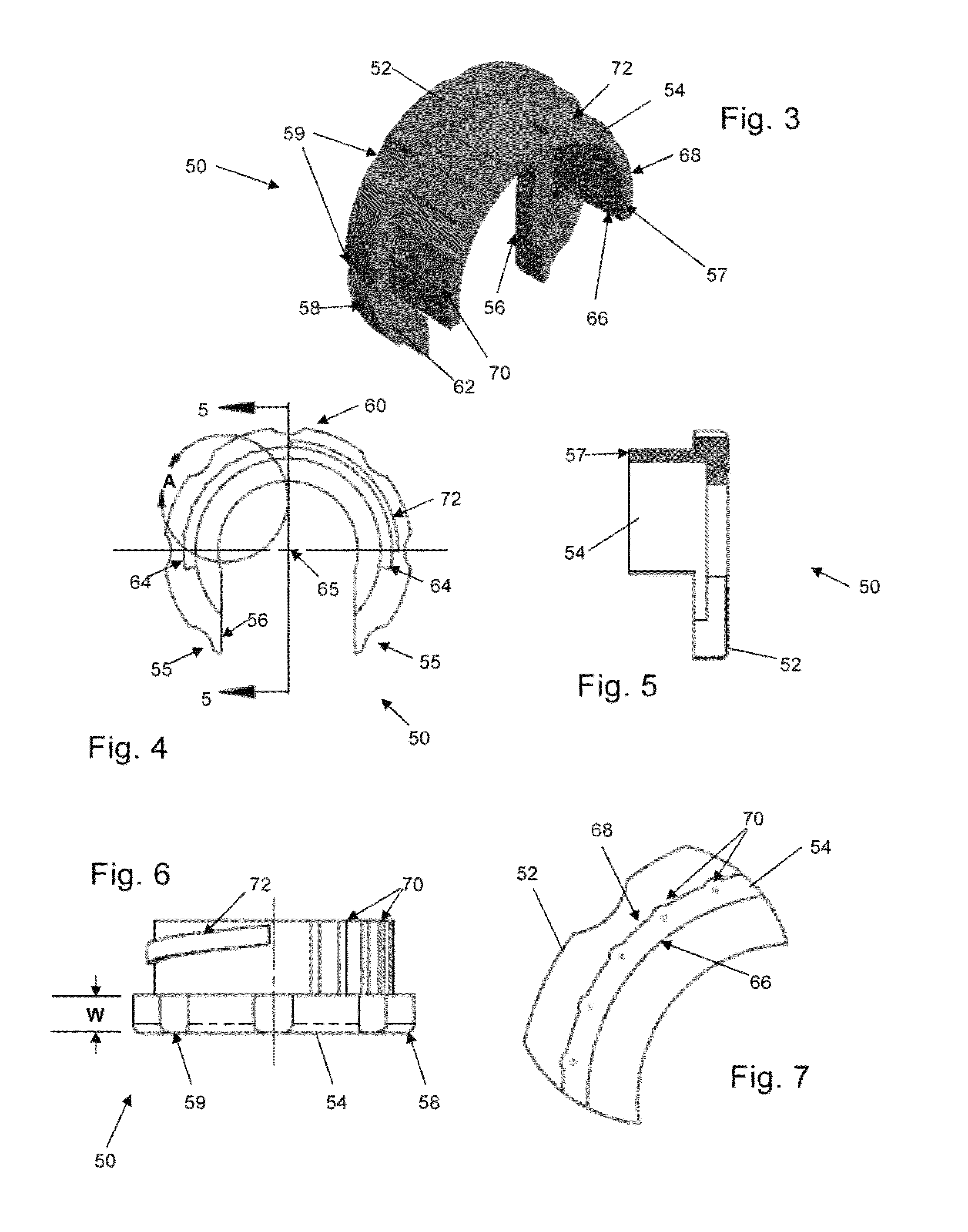Cross platform grip ring release device and method
a technology of ring release device and cross platform, which is applied in the direction of hose connection, coupling, mechanical apparatus, etc., can solve the problems time-consuming, laborious, and laborious, and reducing the overall production capacity. , the effect of reducing the overall production capacity
- Summary
- Abstract
- Description
- Claims
- Application Information
AI Technical Summary
Benefits of technology
Problems solved by technology
Method used
Image
Examples
Embodiment Construction
[0040]As shown in FIG. 1, a fitting 11 can comprise a main body component 12 having an interior wall 13. In various embodiments, the fitting 10 can be formed (e.g., forged, cast, extruded, pressed) in brass, aluminum, steel, malleable iron or copper, with full porting and full flow fitting, for example. The interior wall 13 defines a cavity 15 extending axially through the main body component 12, wherein the main body component 12 can include first 30 and second 32 fitting retention compartments. The fitting retention compartments 30, 32 act as secure pipe receiving segments of the fitting, whereby pipe or tubing elements 24 can be inserted, retained and removed.
[0041]As further shown in FIG. 1, the inner surface 13 can be formed so as to have multiple compartments 40, 42 that receive packing arrangement elements, such a sealing rings (also known as o-rings) 14, 16, a fastening ring (also known as a grip ring) 18 and a release pusher 20. In various embodiments, the sealing rings 14,...
PUM
| Property | Measurement | Unit |
|---|---|---|
| length | aaaaa | aaaaa |
| lengths | aaaaa | aaaaa |
| circumference | aaaaa | aaaaa |
Abstract
Description
Claims
Application Information
 Login to View More
Login to View More - R&D
- Intellectual Property
- Life Sciences
- Materials
- Tech Scout
- Unparalleled Data Quality
- Higher Quality Content
- 60% Fewer Hallucinations
Browse by: Latest US Patents, China's latest patents, Technical Efficacy Thesaurus, Application Domain, Technology Topic, Popular Technical Reports.
© 2025 PatSnap. All rights reserved.Legal|Privacy policy|Modern Slavery Act Transparency Statement|Sitemap|About US| Contact US: help@patsnap.com



